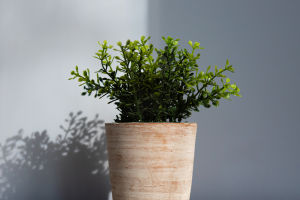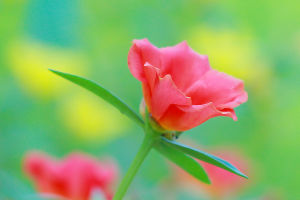Succulent plants, with their plump leaves and bizarre shapes, have attracted more and more plant lovers.
They are popular not only because they are easy to care for but also because these plants showcase the beauty of natural design and incredible adaptability.
Tracing back to the origins of Succulent plants, how did they evolve such a unique appearance and survival skills in extreme environments? There are many untold stories behind this.
First of all, the growth environment of Succulent plants is extremely harsh, and many varieties originate from arid areas such as deserts, high mountains, or dry tropical regions in Africa. These places typically have extremely scarce water resources and experience extreme temperatures.
To adapt to this environment, Succulent plants have evolved thick leaves or stems that can store water during droughts. This evolution allows them to survive long-term water shortages and quickly absorb and store water during the rainy season.
This survival strategy, similar to the "plant version of the camel," is not only one of the secrets to their success but also the reason for their unique shapes.
Succulent plants exhibit a wide range of shapes, and there are significant differences between various species. From the petite lotus palm to the sturdy and commanding agave to the stone-like lithops, each succulent has its distinctive look and style.
Fascinatingly, they often resemble sculptures, as if they were carefully crafted works of art by nature. These plants are not merely living organisms; they seem more like nature's expression, a silent tribute to the power of life.
Even more interesting is that in recent years, Succulent plants are no longer just synonymous with "desert plants"; they have begun to enter the world of art and design. Many garden designers combine Succulent plants with modern art to create landscape pieces that are both engaging and decorative.
For example, some people plant Succulent plants on vertical walls to form "green walls," which are not only beautiful but also help improve air quality.
Additionally, the durability of Succulent plants makes them ideal indoor plants for people who do not have much time to tend to plants. They require infrequent watering and fertilization, and they can maintain healthy growth as long as they receive sufficient light.
If you carefully observe the growth patterns of Succulent plants, you will notice a mysterious resilience. For example, many Succulent plants enter a dormant state during extreme drought conditions, reducing their metabolism to conserve water.
Once the environment recovers, they quickly resume growth. This survival mechanism is akin to a plant version of "hibernation," enabling them to remain alive in adverse conditions.
What is even more astonishing is that Succulent plants are not merely "passively" adapting to their environment. Some species of Succulent plants exhibit active adaptive capabilities.
For instance, certain Succulent plants have a thick layer of wax or fine hairs on their leaf surfaces, which helps reflect intense sunlight and reduce water loss.
Some species have leaves with peculiar spiral shapes that can maximize sunlight absorption and efficiently guide dew toward their roots. These small yet ingenious designs leave people in awe of nature's creativity.
The color of Succulent plants is also one of the reasons they are so captivating. While most plants feature green as their primary color, Succulent plants offer a broad spectrum of colors.
From dark green to pink, even purple and blue, these diverse hues are not just for decoration; they are intricately linked to the plant's survival strategies. Some Succulent plants produce more carotenoids when exposed to intense sunlight, which gives their leaves a reddish or orange hue.
This is a protective mechanism to shield them from damage caused by excessive sunlight. When these plants are in more comfortable environments, their colors often revert to their original green.
The popularity of Succulent plants stems not only from their ease of maintenance but also from the profound survival wisdom and aesthetic value they embody in nature.
They teach us how to sustain life with resilience in harsh environments, how to discover beauty in simplicity, and how to draw creative inspiration from natural designs.
Whether you are a plant enthusiast or simply someone who appreciates the wonders of nature, Succulent plants can add a touch of novelty and inspiration to your life.


